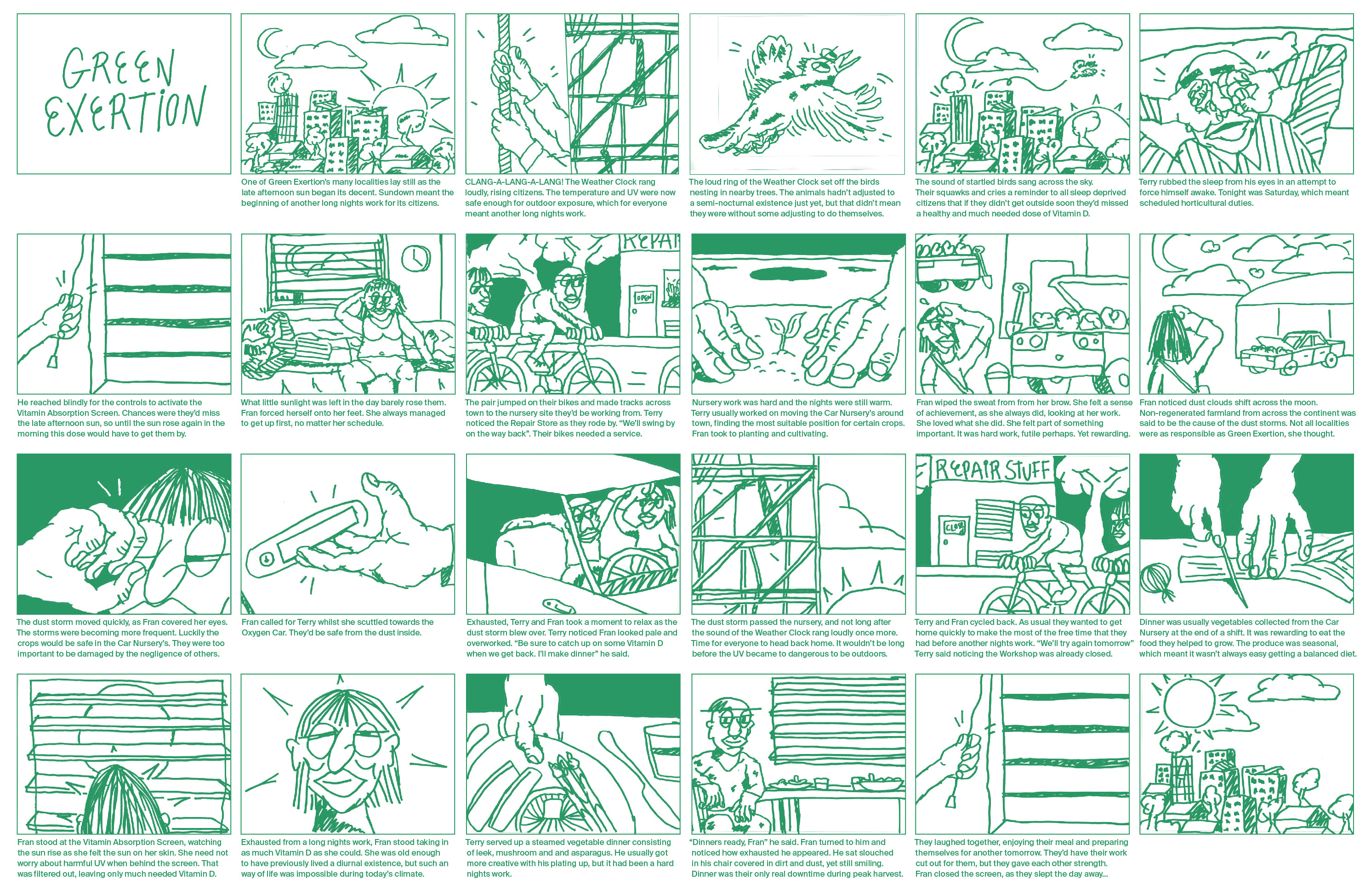Many excellent frameworks exist in futures thinking that aim to encourage consideration of the multiple scales or levels that make up richly imagined alternate worlds. Stuart Candy and Jake Dunagan’s ‘experiential futures ladder’ (2019), Alex McDowell’s ‘world building Mandala’, and Leah Zaidi’s ‘seven foundations model’ (2017) are three examples used in design futuring to elaborate the different interconnected layers of storyworlds. Geels’ multi-level perspective (MLP) is a further example that considers the complex and dynamic relationships between smaller-scaled ‘technological niches’, through mid-scale ‘socio-technical regimes’, to ‘landscape developments’ (Geels 2005). Numerous related examples exist in approaches to systems thinking, such as Donna Meadows twelve leverage points for systems intervention (2008). None of these frameworks is reducible to the other and each possess important differences. Nonetheless, they all share the characteristic of inviting consideration of the different nested scales or perspectives that compose complex historical or speculative contexts.
One challenge with associated with macro-to-micro spectrums is the ambiguity concerning relative understandings of bigness and smallness: a niche might be a landscape for some, a house might be as micro as it gets—how do you ensure the levels or scales are extreme enough at either end? Or put slightly differently: how do you ensure there are enough shifts in scale between different phenomena? A series of impressionistic prompts were conceived to ensure researchers working on this report had expanded their spectrums of micro-to-macro to encompass a diverse scale of phenomena.
At the macro level, students were given the following prompts:
-
How is the notion of 'the good life'
conceived in your world?
- What qualifies as something with
rights in your world? e.g. how is the agency of the non-human
understood, whether in terms of things or organisms?
- What does it mean to exist in a
particular place in your world?
- Where do people in your world look
for sources of truth?
At the micro level:
-
The smell of blooming wattle on wind
from a rare direction
- The way a fly landing on a screen
provokes an awareness of its surface
- The reassuring sound of a car door
closing
- Examples from Nicholson Baker’s A
Box of Matches and Mezzanine
The intent of these impressionistic prompts is obviously to trigger a longer process of speculative and reflective thinking rather than attempt anything close to a comprehensive account of micro and macro exemplification. Having ensured a specific understanding of how the micro and the macro are manifest through meaningful exemplification, the researchers were better placed to conceive and visualise worlds that encompassed phenomena at a diverse range of scales, with diverse patterns of interaction across scales.
Assuming that one scale of reality can be used to explain another is a further problem associated with macro-to-micro worldbuilding models and the mindset they imply: to explain the local, we look to the larger structure, or inversely, to understand the macro we seek local, micro or individual situations. In part inspired by Latour’s critique of Actor-Network Theory and its recapitulation of tendencies associated with individual-and-structure/ micro-and-macro explanations in sociology (Latour 1999), we added an approach that ignored the tiered model of scales in favour of exploring the way different, horizontally related ‘in the world items’ (Hacking 1999, 21), might be enfolded within or transformed by each other. Hacking’s “disparate list” was used as a guide in this regard, along with his quip, included at the end, to indicate that the list is an open, rather than closed, totality.
People (children)
States (childhood)
Conditions (health, childhood autism)
Practices (child abuse, hiking)
Actions (throwing a ball, hugging)
Behavior (generous, fidgety)
Classes (middle, lower, upper, etc)
Experiences (of falling in love, of being disabled)
Relations (gender)
Material objects (rocks, glass)
Substances (sulphur, dolomite)
Unobservables (genes, sulphate ions)
Fundamental particles (quarks)
(And homes, landlords, housecleaning, rent, dry rot, evictions, bailiffs, squatting, greed, and the Caspian Sea.)
(Hacking 1999, 21)
Continue ︎︎︎
[12] Pickle World: fostering community in light of a recovering planet that was in a pickle

[13] Green Exertion

[14] Pickle World: fostering community in light of a recovering planet that was in a pickle
